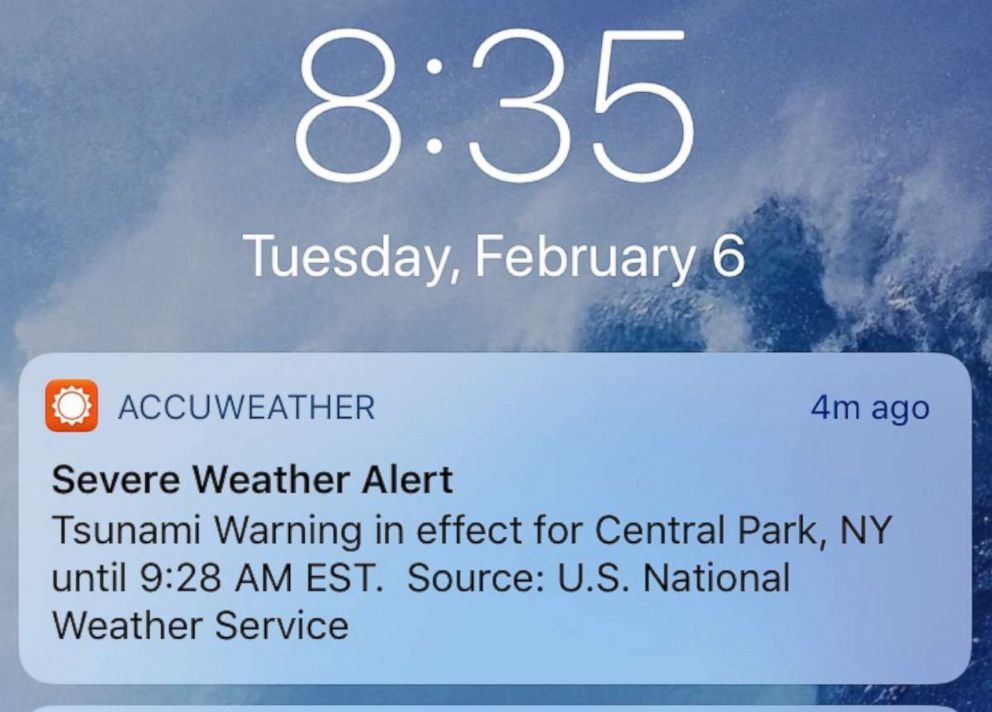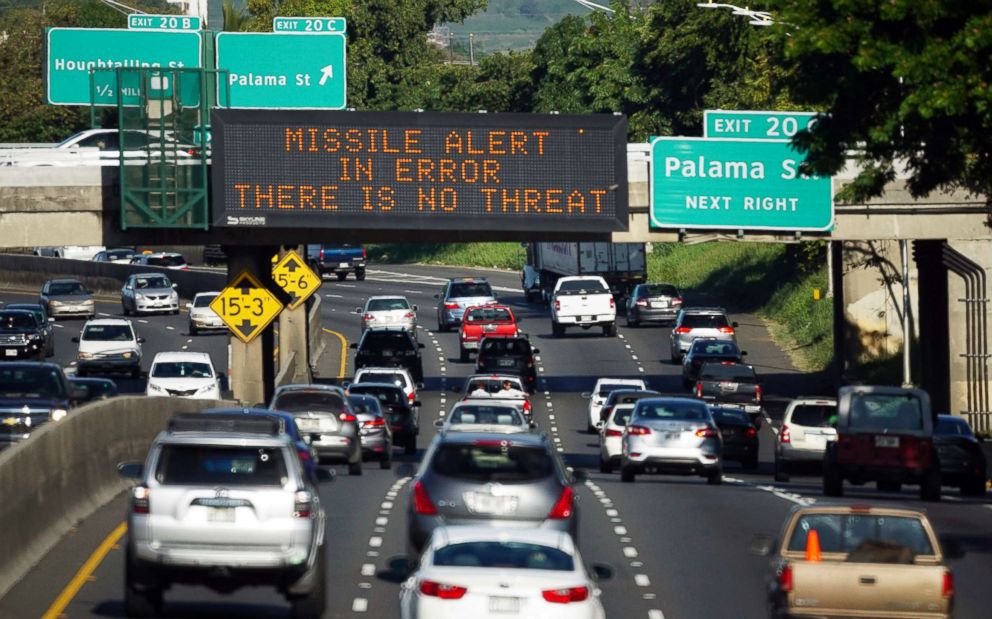False tsunami warnings go out along the East Coast and in Texas
The National Weather Service blamed an app.
— -- Hawaiians aren't the only ones who may have experienced a false sense of impending doom recently.
A test warning for a tsunami went out this morning, but without being clearly marked as a "TEST."

In an explanatory tweet today, National Weather Service of New York officials said the warning, which was received at least along the East Coast and in Texas, "did have TEST in the message.” But users would have had to open the alert to see it.
The official Twitter account for the Miami branch of the National Weather Service sent out a clarification on its feed at 9:04 a.m., saying an app made a mistake.
The exact number of people who received the alert remains unclear, but the test apparently included people in Houston, prompting that city's National Weather Service outpost to issue a clarification as well.
And then a clarification to its clarification.
The National Weather Service issued a statement clarifying that it was a routine test message that was sent out by "at least one private sector company as an official Tsunami Warning, resulting in widespread reports of tsunami warnings received via phones and other media across the East Coast, Gulf of Mexico, and the Caribbean."
"We're currently looking into why the test message was communicated as an actual tsunami warning, and will provide more information as soon as we have it," the statement reads.
An unknown number of people received the alert from the Accuweather app and the company issued a tweet reiterating that the tsunami warning was a test.
In a statement to ABC News, AccuWeather pointed to a miscoded message from the National Weather service as the source of the problem.
"This morning AccuWeather passed on a National Weather Service Tsunami Warning that was intended by the NWS to be a test but was miscoded by the NWS as a real warning," the statement reads. "AccuWeather has the most sophisticated system for passing on NWS tsunami warnings based on a complete computer scan of the codes used by the NWS. While the words 'TEST' were in the header, the actual codes read by computers used coding for real warning, indicating it was a real warning."
"The NWS warning also later appeared on other sources such as The Weather Channel and it even appears on some pages of the NWS own website as a real warning. The NWS is the original source of the information and displayed it as a real warning," the statement said.
The National Weather Service did not immediately respond to ABC News' request for comment on AccuWeather's statement.
Today's false alarm may have hit a little too close to home for some after residents in Hawaii were left in a panic Jan. 13 when an erroneous alert was sent to cellphones saying there was a ballistic missile threat.

The Hawaii Emergency Management Agency issued a tweet 10 minutes later saying there was no threat, but no corrective alert was sent for 38 minutes after the first alert.
The employee who sent the false alert has been terminated.




